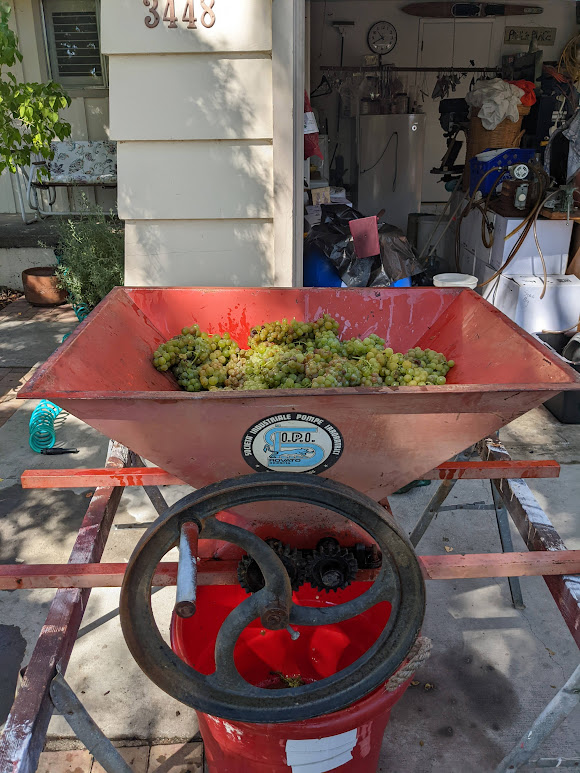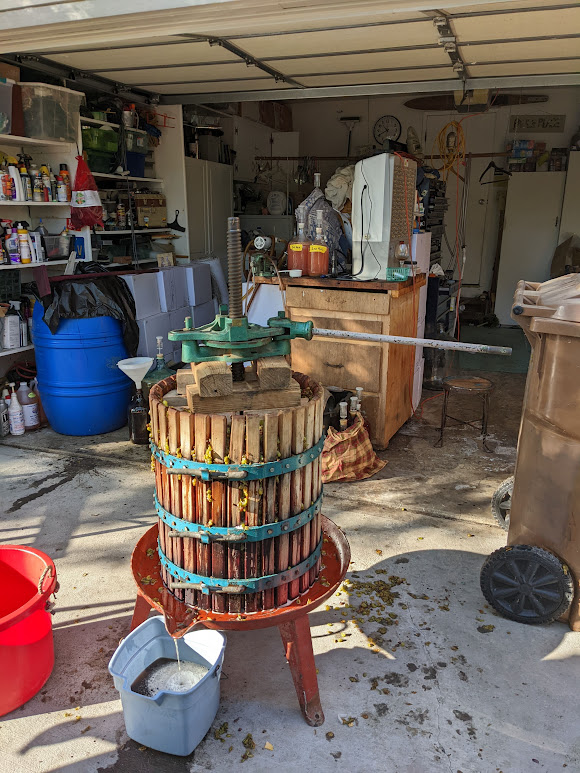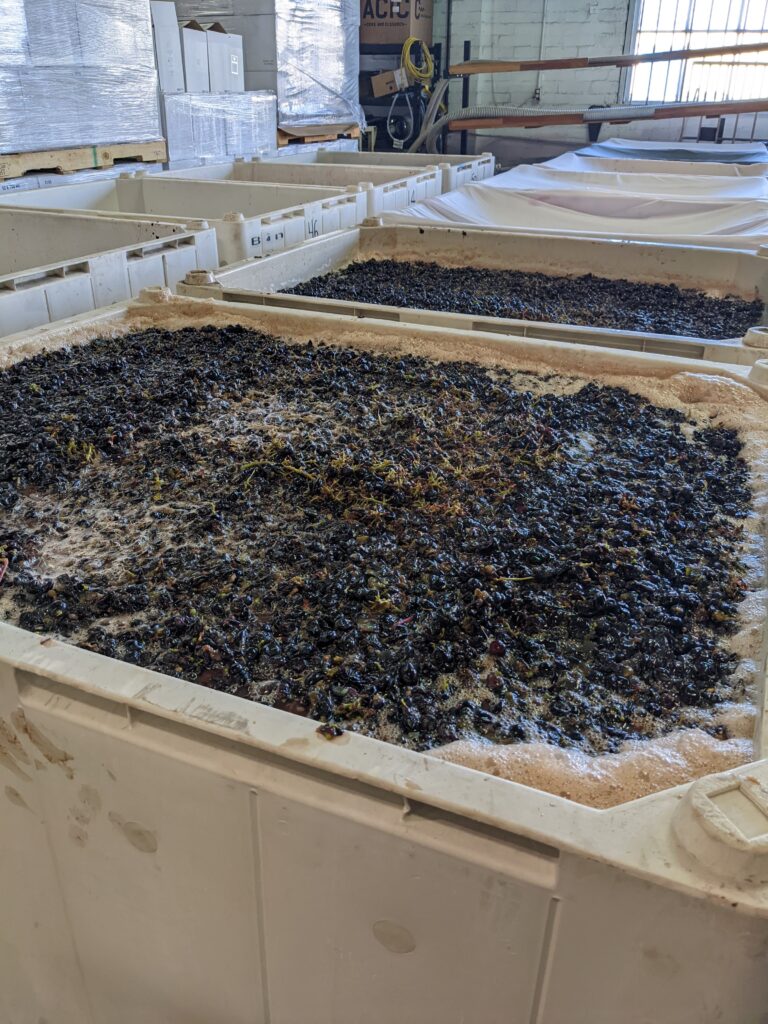
Crush is a crazy time, but I love it. It’s like unwrapping Christmas presents you’ve been shaking for a month. Maybe you’ve had good feelings about the grapes. Maybe you’ve been worried about them. But this is where you’ll get your first indication of which way the year is going (though, tbh, wine does love to throw curveballs.).
But first you have to get the grapes picked, and transported, and then you actually have to get them crushed. And during this heatwave? Yikes. You don’t want to leave your grapes baking in the sun.
Crush is what it sounds like, and it’s the first step in the winemaking process. You take your grapes, and you dump them into a crusher, which – and this is the technical term – squishes them. It doesn’t press them – it’s not about squeezing all the juice out – but it ruptures the grapes and generally is followed by destemming which is where, you guessed it, the individual berries of the grapes are separated from the stems.
You don’t have to do this – there are other processes, like carbonic masceration, whole cluster pressing, but they are more specialized. So! Back to crushing. You crush your grapes, and then you’re left with a bunch of somewhat squished grapes, juice, and hopefully very few stems. At this point reds usually go straight into some sort of fermentation vessel, and whites go straight into the press.

As to the commercial zinfandel this year, we did successfully get it hauled to the custom crush facility, where they crushed the grapes, put them in bins, added some water to make up for those little raisins that Zinfandel inevitably contains, put a bit of So2 on the top…and set them up for soaking!

What is soaking? Soaking is when you let the crushed juice and skins sit. Sometimes this is done at very low temperatures, in order to limit wild fermentation, oxygen uptake, and even shift what is extracted. We like somewhat warmer soaks – not so hot as to rush into full active fermentation, but enough to help increase the extraction of monomeric tannins and give the wild yeast a bit of a head start. More on yeast later.
The first couple of days of soaking is one of the best time to smell the future wine. As it soaks, the aromas get more intense. They’ll vanish shortly, hidden under the smell of fermentation and yeast esters, but by and large, what you smell during the soak is what you get in the end (if, as my dad says, you don’t screw it up.) Every wine we made from Kim’s vineyard started with amazing in-your-face fresh raspberry aromas. These would usually mellow out and be hidden by fermentation, and then be present, but much less vigorously…up until the spring rolled around, and then they’d come right back out of hiding, but more complex – smoother, more intricate, but no less intense. So with this harvest? Using grapes I’ve never worked with before? You better believe that I was sticking my nose into the must every chance I got.
For the garage projects, the muscat is insanely floral. Think orange blossom and honeysuckle. Roger King’s Zinfandel is black cherries and a wallop of red fruit. The Russian River Zin is full of sweet raspberries and blackberries and some delicate floral notes that pluck at my memory but won’t quite land. It’s a good start 🙂
